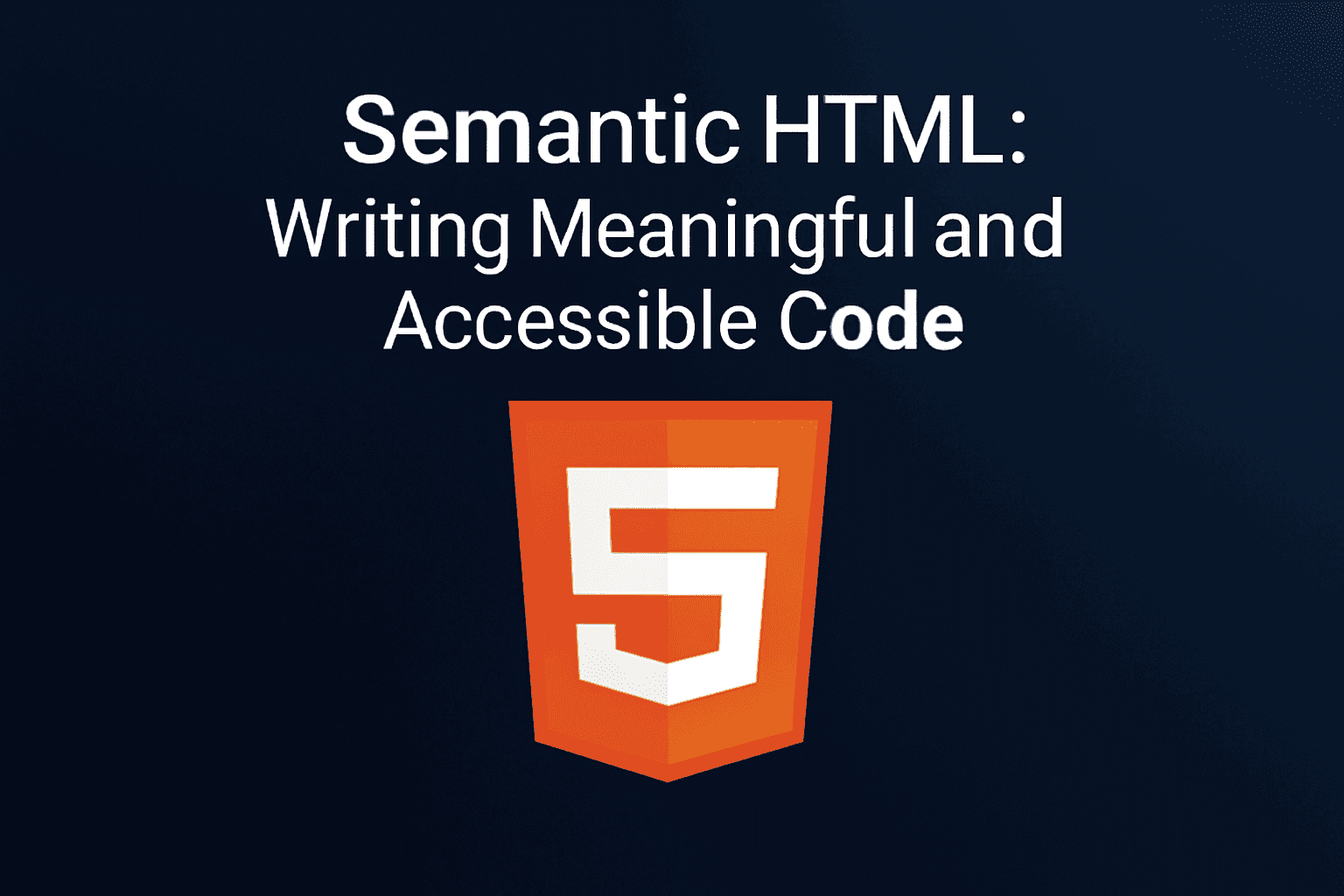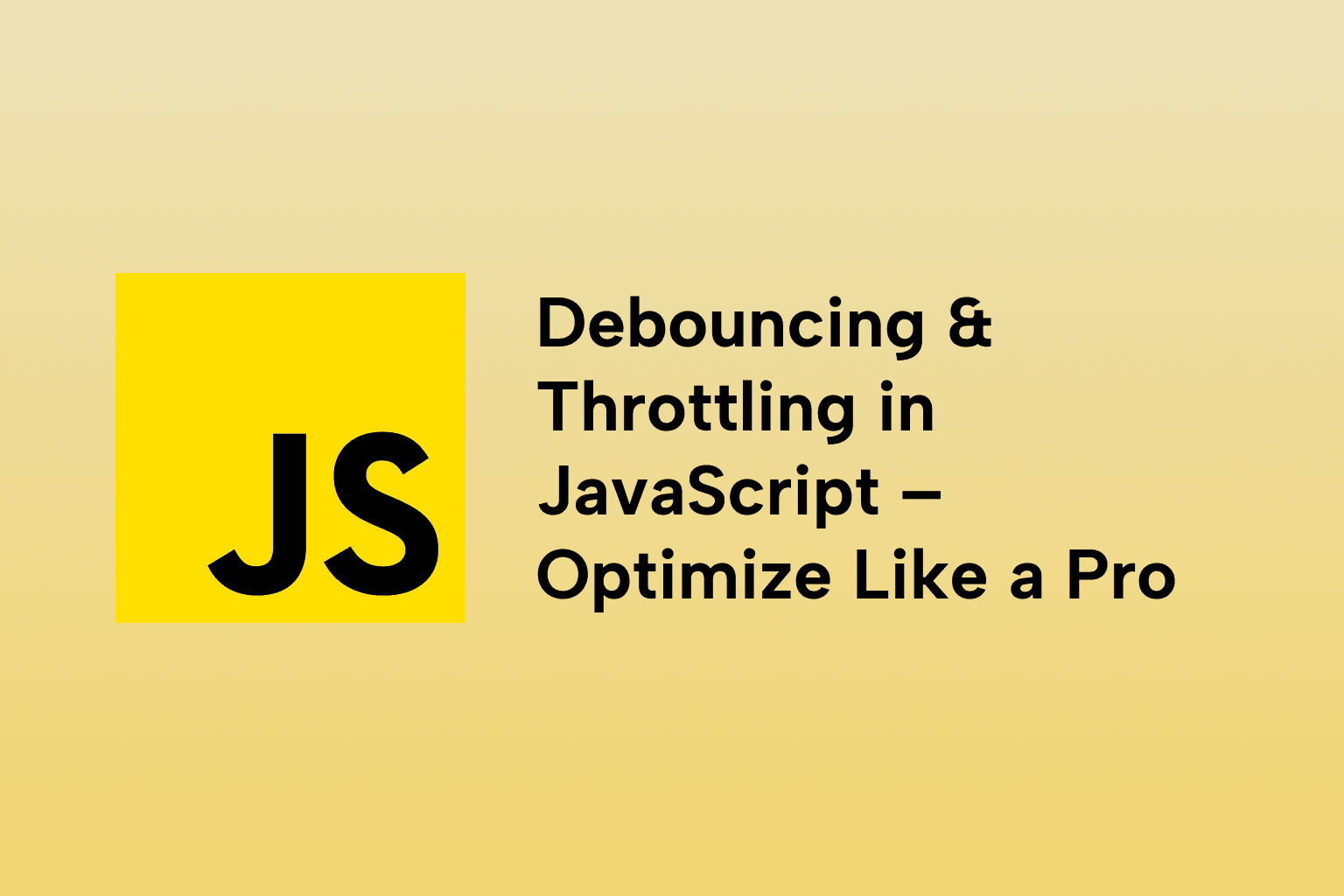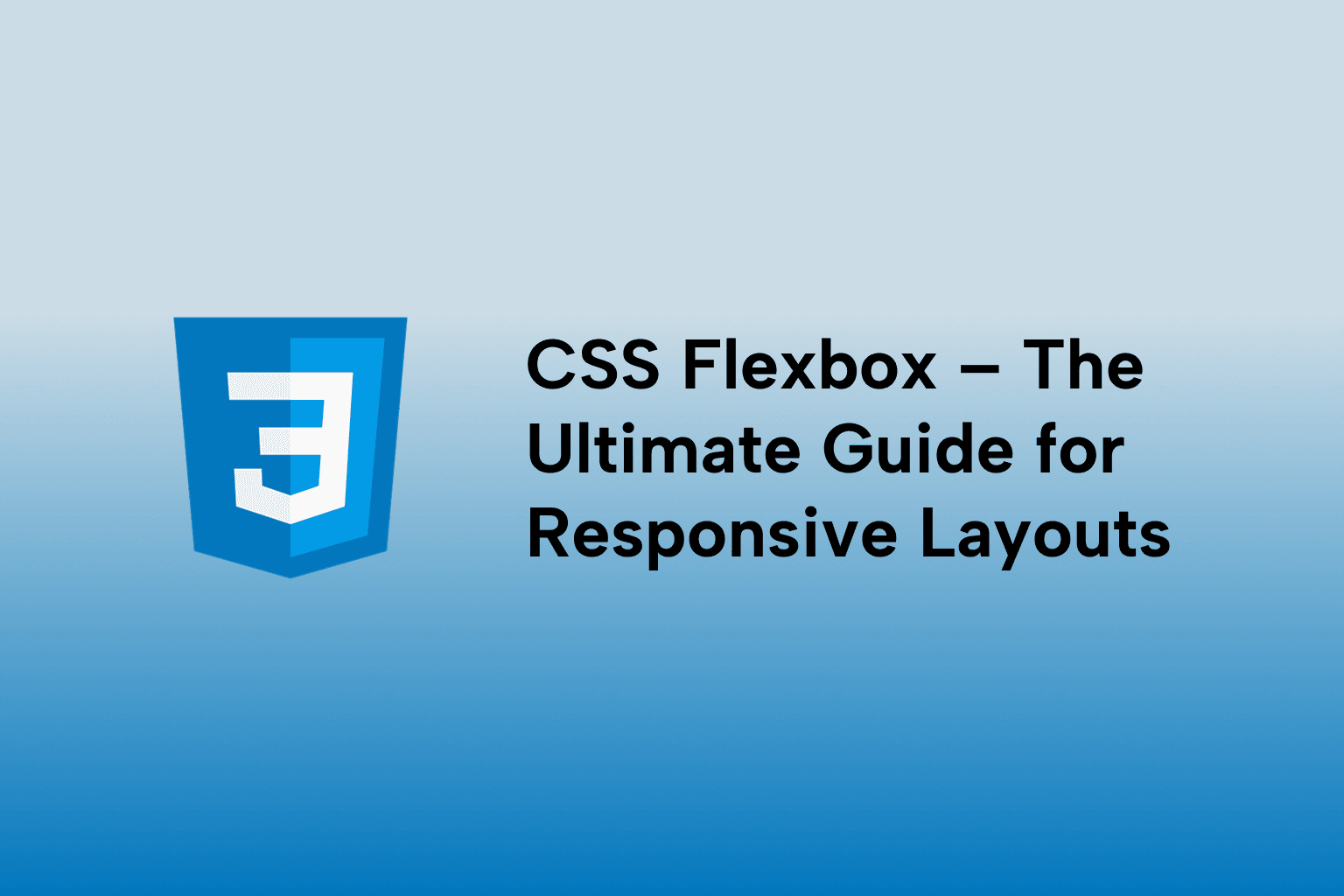Semantic HTML: Writing Meaningful and Accessible Code
 Mark Haverbeke
Mark Haverbeke
TABLE OF CONTENTS
What is Semantic HTML and Why It's Important
Semantic vs Non-Semantic Tags
Key Semantic Elements
Benefits of Semantic HTML
Examples of Semantic Structuring
Tools to Validate Semantic HTML
Extended Concept: Semantic Nesting & Document Outline
Accessibility Enhancements with Semantic Tags
Deep Dive: SEO Benefits of Semantic HTML
Comparison with ARIA (Accessible Rich Internet Applications)
Semantic HTML for Media Content
Bonus: Semantic HTML Tags You Might Not Be Using (But Should)
Developer Tools & Plugins for Semantic Debugging
Tips to Practice Semantic HTML in Projects
Summary Table: Benefits of Semantic HTML
What is Semantic HTML and Why It's Important
Semantic HTML uses tags that clearly describe their meaning in a human- and machine-readable way. For example:
- header is a container for introductory content.
- nav is for navigation links.
- article is for self-contained content.
In contrast, non-semantic elements like
Why It's Important
- Accessibility : Semantic tags help screen readers and assistive technologies interpret the structure and purpose of the content.
- SEO : Search engines use semantic structure to index pages better and understand content hierarchy.
- Maintainability : Developers can more easily read, debug, and extend semantic code.
- Future-proofing : As web standards evolve, semantic HTML remains stable and relevant.
Semantic vs Non-Semantic Tags
| Semantic Tags | Non-Semantic Tags |
|---|---|
<article> |
<div> |
<section> |
<span> |
<header> |
|
<footer> |
|
<nav> |
|
<main> |
|
<aside> |
Non-semantic HTML is not inherently "bad," but it lacks meaning. You should use semantic elements whenever possible and reserve generic containers for cases where no semantic equivalent exists.
Key Semantic Elements
Here’s a breakdown of the most important semantic elements you should be using in HTML5:
1 . header
<header>
Used to define introductory content, like logos, navigation links, and page titles. Typically found at the top of the page or within sections/articles.
<header>
<h1>My Blog</h1>
<nav>...</nav>
</header>
2 . nav
<nav>
Specifies a block of navigation links — whether global (main menu) or local (section-based).
<nav>
<ul>
<li><a href="/">Home</a></li>
<li><a href="/about">About</a></li>
</ul>
</nav>
3 . main
<main>
Represents the main content area of a document, excluding headers, footers, and sidebars.
<main>
<h2>Blog Posts</h2>
<article>...</article>
</main>
4 . section
<section>
Defines thematically grouped content — for example, a group of related blog posts, features, or services.
<section>
<h3>Our Services</h3>
<p>We offer web design, development, and SEO.</p>
</section>
5 . article
<article>
Used for self-contained content that could be independently reused or syndicated — blog posts, news articles, user comments, etc.
<article>
<h2>What is Semantic HTML?</h2>
<p>Semantic HTML describes the meaning of the content.</p>
</article>
6 . footer
<footer>
Defines the footer of a document or section. Usually contains metadata like author info, copyright, or links.
<footer>
<p>© 2025 My Blog. All rights reserved.</p>
</footer>
Benefits of Semantic HTML
Using semantic HTML isn’t just about clean code — it has real benefits that affect how users and machines experience your website.
1 . SEO (Search Engine Optimization)
Search engines like Google prioritize semantically structured sites. Elements like article tag and section tag help crawlers understand your page’s layout and hierarchy.
2 . Accessibility
Semantic HTML plays a vital role in making your website accessible to users with disabilities.
- Screen readers rely on semantic tags to announce content properly.
- nav tag tells assistive technologies “this is navigation.”
- main tag focuses screen readers on the core content.
3 . Readability & Maintainability
Semantic code is easier for developers to read, navigate, and debug. It’s immediately clear what each part of the page does — reducing onboarding time and confusion.
4 . Future-Proofing
Browsers continue to evolve to support semantic tags more fully. Using them makes your code more compatible with new technologies and tools.
Examples of Semantic Structuring
Here’s a small example of a semantically structured web page:
<!DOCTYPE html>
<html lang="en">
<head>
<meta charset="UTF-8">
<title>Semantic HTML Example</title>
</head>
<body>
<header>
<h1>My Website</h1>
<nav>
<ul>
<li><a href="#">Home</a></li>
<li><a href="#">Services</a></li>
</ul>
</nav>
</header>
<main>
<section>
<h2>About Us</h2>
<p>We build accessible websites using modern standards.</p>
</section>
<article>
<h2>Understanding Semantic HTML</h2>
<p>Semantic tags tell the browser what each part of your page means.</p>
</article>
</main>
<footer>
<p>© 2025 Semantic Web Solutions</p>
</footer>
</body>
</html>
Tools to Validate Semantic HTML
To ensure your code is well-structured and semantic, consider using these tools:
1 . W3C Validator
Validate your HTML and check for semantic errors.
2 . Lighthouse (Chrome DevTools)
Provides accessibility and SEO audits, highlighting non-semantic issues.
Steps: Open DevTools → Lighthouse → Run audit
3 . axe DevTools
A powerful Chrome extension for identifying accessibility violations.
4 . Semantic HTML Cheat Sheets
Keep a reference handy for tag usage and best practices. Sites like MDN (Mozilla Developer Network) offer detailed docs.
Extended Concept: Semantic Nesting & Document Outline
Semantic HTML isn't just about using the right tag — it’s also about how you nest elements to form a logical outline.
Example: Correct Nesting
<main>
<article>
<header>
<h2>Blog Title</h2>
<p>Published on June 2, 2025</p>
</header>
<section>
<h3>Introduction</h3>
<p>...</p>
</section>
<section>
<h3>Main Content</h3>
<p>...</p>
</section>
<footer>
<p>Author: Jane Doe</p>
</footer>
</article>
</main>
This forms a logical document outline, which screen readers and search engines use to understand structure and importance.
Accessibility Enhancements with Semantic Tags
Semantic tags help screen readers identify and jump to regions, enhancing keyboard navigation and ARIA compatibility.
Practical Tips:
- Use one main tag element per page.
- Wrap repeated navigational links inside a
- Use label tag elements for form fields and associate them using for and id.
- Prefer native semantic elements over ARIA roles when possible.
Example:
<!-- Good -->
<nav aria-label="Main Navigation">
<ul>...</ul>
</nav>
<!-- Better -->
<nav>
<ul>...</ul>
</nav>
Native semantic tags already include implicit ARIA roles -
<nav> = role="navigation".
Deep Dive: SEO Benefits of Semantic HTML
Search engines prioritize pages that are well-structured and easy to crawl. Semantic HTML enhances Rich Snippets, Featured Snippets, and Voice Search Compatibility.
SEO Boosting Tags:
| Tag | SEO Benefit |
|---|---|
<article> |
Identifies content suitable for syndication |
<section> |
Helps Google segment content logically |
<header> |
Gives context to the page or section |
<strong> |
Emphasizes importance for semantic search |
Using Structured Data with Semantic HTML Enhance SEO further by combining semantic HTML with schema.org microdata or JSON-LD.
<article itemscope itemtype="https://schema.org/BlogPosting">
<h1 itemprop="headline">What is Semantic HTML?</h1>
<p itemprop="articleBody">Semantic HTML gives meaning to web content...</p>
</article>
Comparison with ARIA (Accessible Rich Internet Applications)
When should you use ARIA vs semantic HTML?
| Use Case | Recommended Approach |
|---|---|
| Standard structure | Use semantic HTML |
| Custom widgets (e.g., sliders) | Use ARIA attributes |
| Native HTML doesn't exist | Use ARIA roles/labels |
Rule of Thumb: If you can use a semantic HTML element, do that first before using ARIA.
Semantic HTML for Media Content
For Images:
<figure>
<img src="team.jpg" alt="Our development team">
<figcaption>Meet our team</figcaption>
</figure>
For Video/Audio:
<video controls>
<source src="demo.mp4" type="video/mp4">
Your browser does not support video playback.
</video>
This improves user experience and helps assistive technologies provide relevant context.
Bonus: Semantic HTML Tags You Might Not Be Using (But Should)
| Tag | Description |
|---|---|
<address> |
Provides contact info |
<mark> |
Highlights important text |
<time> |
Encodes time/date data (great for SEO) |
<details> |
Toggles hidden content |
<summary> |
Summary line for <details> toggle |
<output> |
Represents result of a calculation/form |
<dialog> |
Native modal window (still gaining support) |
Example:
<details>
<summary>Show Technical Details</summary>
<p>This section contains advanced configuration settings...</p>
</details>
Developer Tools & Plugins for Semantic Debugging
Semantic Inspection Tools:
- axe DevTools – for accessibility violations
- HTML5 Outliner (Chrome Extension) – visualize document outline
- Wave Accessibility Tool – highlights HTML semantic issues
- Semantify – shows tag usage patterns
Tips to Practice Semantic HTML in Projects
- Start with a wireframe and map components to semantic elements.
- Avoid nesting
inside or misusing
for structure.- Always use alt attributes for images.
- Document structure should make sense even with styles turned off.
Summary Table: Benefits of Semantic HTML
Area Impact SEO Improves indexing & rich snippets Accessibility Enhances screen reader experience Maintainability Easier for devs to read/update Performance Native elements often perform better Future-proofing More robust with browser evolution

Mark Haverbeke
Senior Frontend Engineer
Mark is a passionate software developer and author with expertise in JavaScript and Python. He enjoys simplifying complex programming concepts and sharing practical coding tips.



